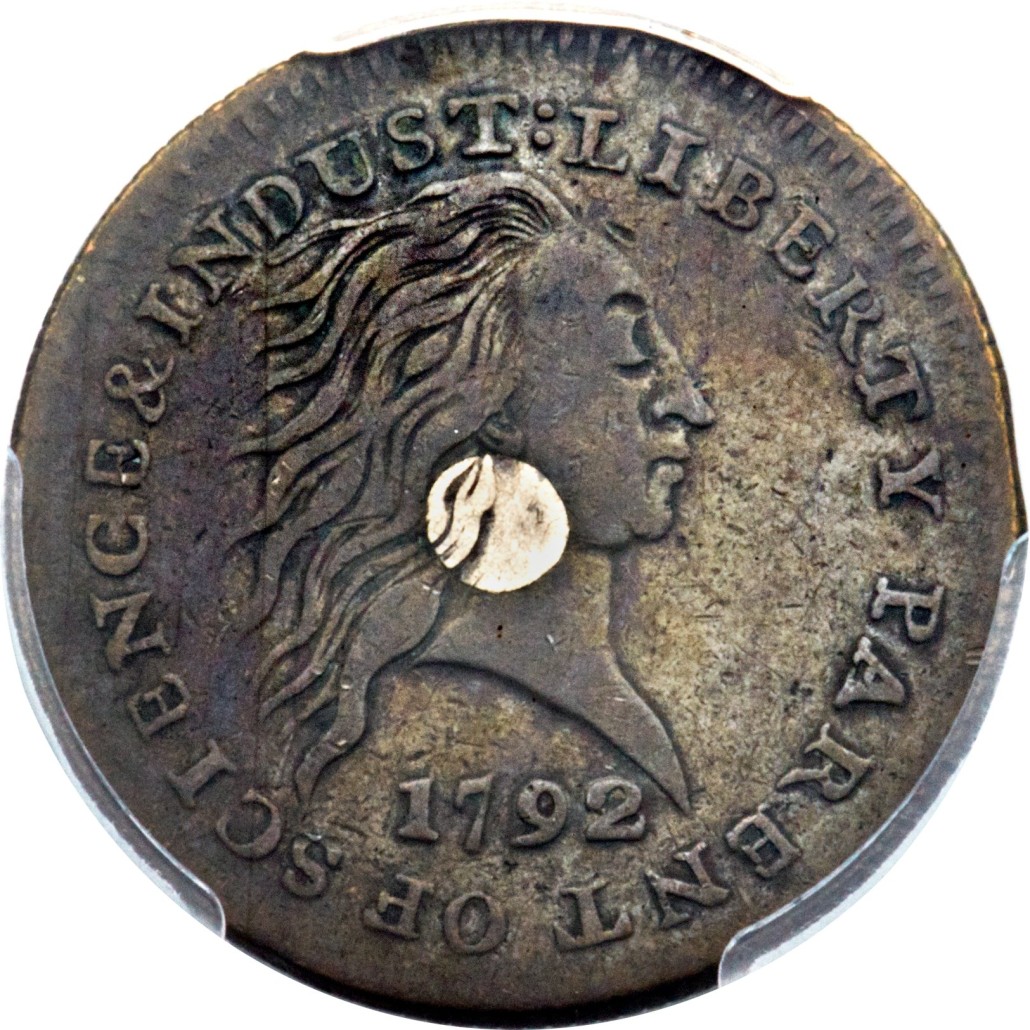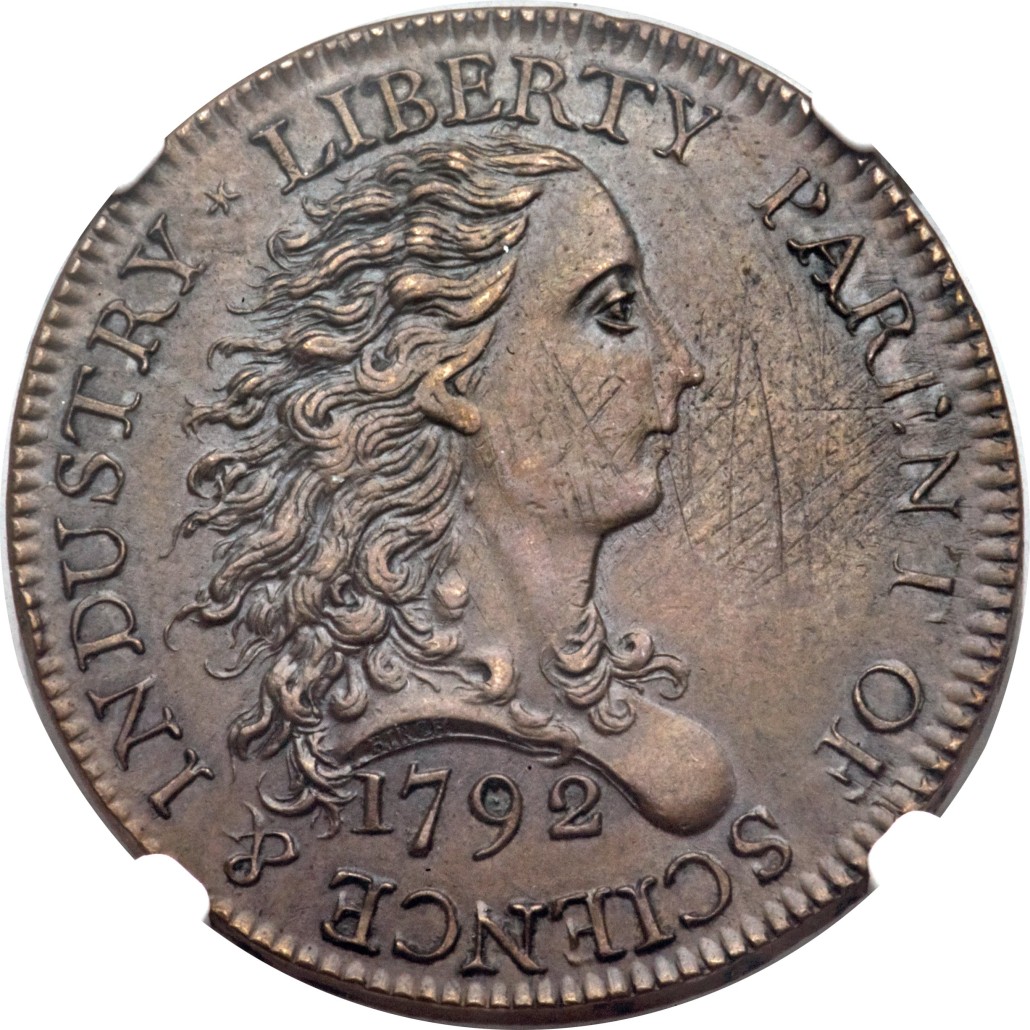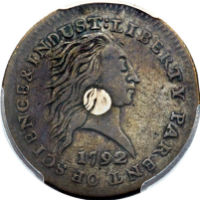
LOS ANGELES – Two early American pennies, among the first struck by the U.S. Mint in 1792, fetched a combined $869,500 on Wednesday. Heritage Auctions, which sold the coins, said they were among the most historically important coins to come to auction in more than 20 years.
“As the first coins produced inside the U.S. Mint in Philadelphia, these two coins played an important role in the development of the United States’ monetary system,” said Greg Rohan, president of Heritage Auctions. “Interest in these rarities extended well beyond the historical: Both are in excellent condition for their age and type.”
A winning bid of $352,500 claimed a 1972 Silver Center Cent (above), so named for a small silver plug added to make its intrinsic value equal to its face value. The concept was suggested by American patriot Thomas Paine and endorsed by Thomas Jefferson in a letter to President George Washington. The copper penny is about the size of today’s modern quarter.
The second penny was a 1792 Birch Cent (below), supposedly engraved by Robert Birch, but never confirmed. The coin is the finer of the two known surviving examples of this experimental design and sold for $517,000.

The pennies were offered as part of a five-day public auction of rare coins and paper money conducted in Anaheim, Calif., by Heritage Auctions of Dallas, Texas. The entire sale is expected to bring $10 million or more.
And they have historical significance that goes beyond their collectible value, representing “the transition in American history from the colonies to a new republic,” said Eric Bradley, a spokesman for Heritage Auctions.
“These are coins that were developed and thought up by the Founding Fathers who were trying to differentiate themselves from British coinage and British rule,” said Bradley.
The words “Liberty Parent of Science & Industry,” which are engraved on both coins, also show how the United States was trying to distance itself from the religious persecution and monarchy it associated with Britain, Bradley said.
According to the auction house, the Silver Center Cent went missing before eventually being discovered in an English pub in the 1960s. The man who discovered it, Nigel Willmott, kept hold of it until 1997, when he eventually auctioned it off for 28,750 British pounds, Bradley said.
___
Associated Press contributed to this article
Copyright 2016 Associated Press. All rights reserved. This material may not be published, broadcast, rewritten, or redistributed.


